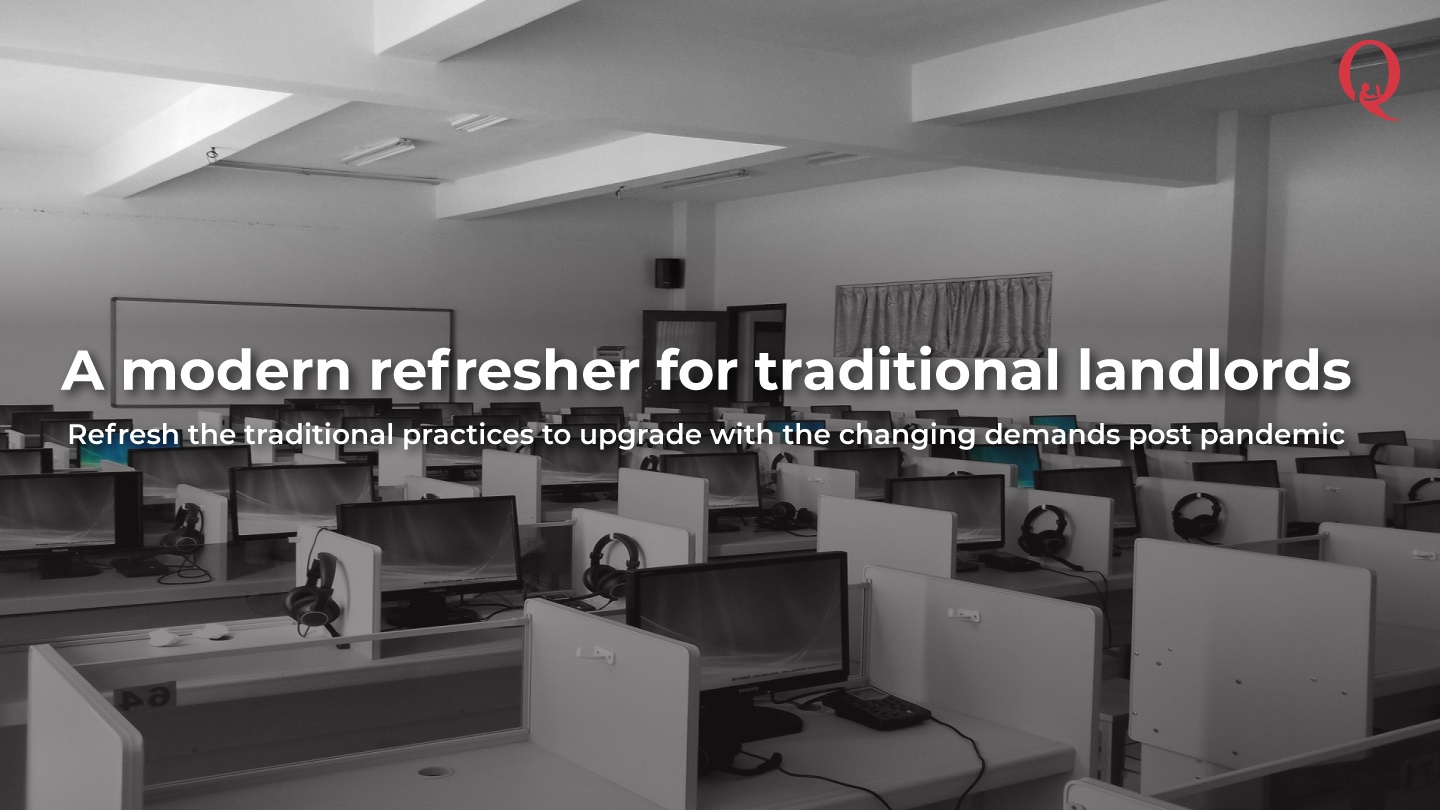Since the pandemic has significantly influenced the traditional ways in which companies function and strategize, there has been a re-evaluation of office operation models with work-from-anywhere gradually occupying the center stage. The flex workplace segment has positioned itself as one of the major sellers for the office market in India, more so with the advent of the gig economy and ease of commute. In fact, owing to the increasing shift, its expansion across cities, and the fillip provided by sustained funding, India’s flexible stock is expected to grow by 10-15% (y-o-y) from the current 36 Mn sq. ft in the next three years.
With 30% of global office inventory projected to become flexible by 2030, landlords are now seeing the value of flex space for their portfolios.
As the market is shifting to short-term leases, owners and investors are forced to re-evaluate their valuation models and the risk involved in offering flexibility. It’s a good time for landlords to embrace the benefits of flexible workspace not just to future-proof their assets but also to stand out at a time when businesses are on their road to recovery.
Below are some areas in which landlords can refresh their traditional practices to upgrade with the changing demands post-pandemic:
- The Human way:
Providing a coworking space means more than just putting desks in a room. It’s about human beings and their purpose. Also, a diversified flex market, a differentiated brand will compete most effectively and would directly impact member experience, occupancy rate, and, hence, the bottom line of your interest. Since worker well-being is now the first priority for business, the workspace providers or the landlords bear the responsibility to curate connected and exceptional human experiences for the stakeholders – be it tenants, space operators, or end-users. By incorporating breakout spaces and dedicated communal areas into their floor plan, landlords can ensure a people-centric approach that ultimately drives good company culture.
- Tech and ‘Amenitization’:
Designing for a shared environment is unlike designing for a traditional office space. A well-optimized flexible office is capable of generating revenue out of each square foot. The advance-thinking landlords connect their buildings with attractive technology and place their focus on higher flexibility and innovative solutions and infrastructures such as pay-per-use models, etc. Smart ventilation systems, motion sensors, lighting, integrated video conferencing in meeting rooms, desk booking systems, smart workspace management software, all can contribute to a comfortable, healthy, and productive environment.
- Flexible contracts:
In this ever more saturated market, technology can be a crucial point of differentiation, therefore, commercial landlords must rethink their entire portfolio wherein they can offer more than just the four walls of a space. By offering a range of integrated services under one roof, landlords’ flex workspace providers can outshine in the market where more than 90% of operations are still based on conventional leasehold models. Tenants are more likely to sign up for a contract that gives them an option of flexing into additional space if required need be or ease of reconfiguring existing space to make it flexible.
It’s a Win-Win
The only way flex workspace providers can stay ahead of the curve and keep the revenue flowing in is by catering to the changing needs of the workers. We’re clearly experiencing a digital transformation of ‘the office’ and it’s critical that workspace providers or landlords align their strategy to deliver the in-building experiences as per the expectations of the modern occupiers so that they can be easily drawn back to their workplaces after the pandemic.










